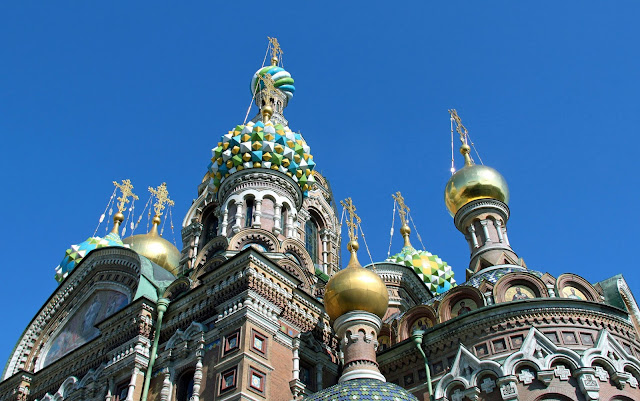 It
seemed like a lark. When Peter the Great built this city on a swamp,
his subjects humoured the Emperor. When he declared it the new capital,
they were less amused.
It
seemed like a lark. When Peter the Great built this city on a swamp,
his subjects humoured the Emperor. When he declared it the new capital,
they were less amused.
But history has shown that the forward-thinking, Westward-looking tsar was inspired. Gradually, St Petersburg evolved from a swampy backwater into a modern European city, Russia’s ‘window to the West’. Unlike Moscow’s
red bricks and onion domes, St Petersburg’s network of canals and
baroque and neoclassical architecture give the city a European flavour,
no doubt because it was built by Italian architects.
Even the residents of St Petersburg fancy themselves ‘European’ and somehow slightly more sophisticated than their more easterly compatriots.
Even the residents of St Petersburg fancy themselves ‘European’ and somehow slightly more sophisticated than their more easterly compatriots.
St
Petersburg has always been a city of ideas. Petersburgers incited the
Russian Revolution, ushering in 70 years of communist rule. And it was
St Petersburg that encouraged democracy when the tide began to change.
Nowadays,
this city’s citizens are breaking down the barriers of generations
past and exploring new ideas, investigating the possibilities of
consumerism, creativity and career. It’s not only Rastrelli’s
architecture and Tchaikovsky’s operas that entice visitors, but also
beatnik bands, edgy art galleries, underground clubs and delectable
dining. St Pete’s bohemian side gives a glimpse into the 21st century;
and (to borrow a communist slogan) the future is bright!
St
Petersburg is legendary for its White Nights: those long summer days
when the sun barely dips below the horizon. Revels start in May, when
the city finally succumbs to spring and the parks are filled with
flowering trees. But even when the skies are grey and the ground is
covered in snow, the rich culture of St Petersburg dazzles and
delights.
Ready to go?
These tours & activities make it easy:
 Things to do
Things to doHotels
Need to know
Tips & articles




































































































Комментариев нет:
Отправить комментарий